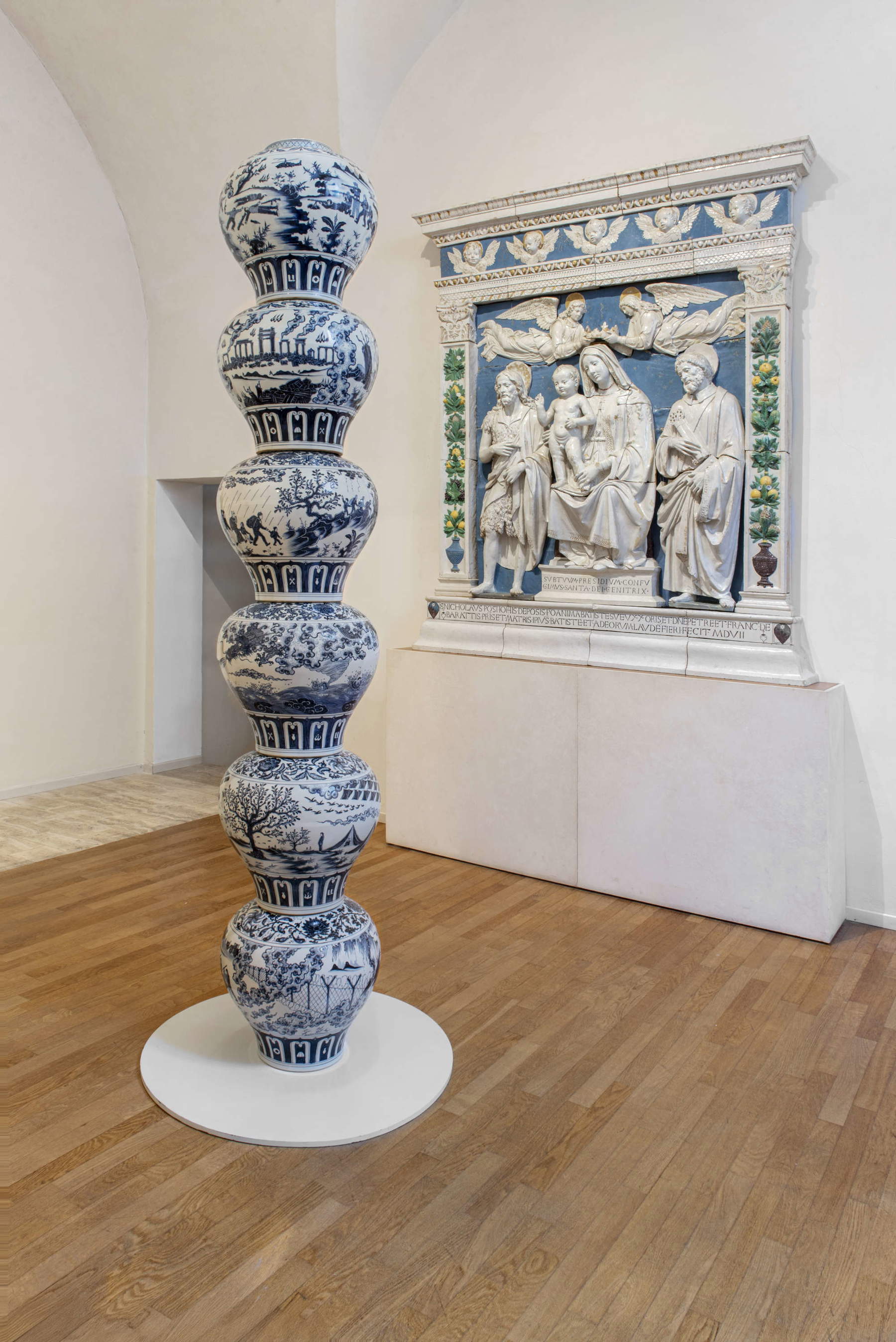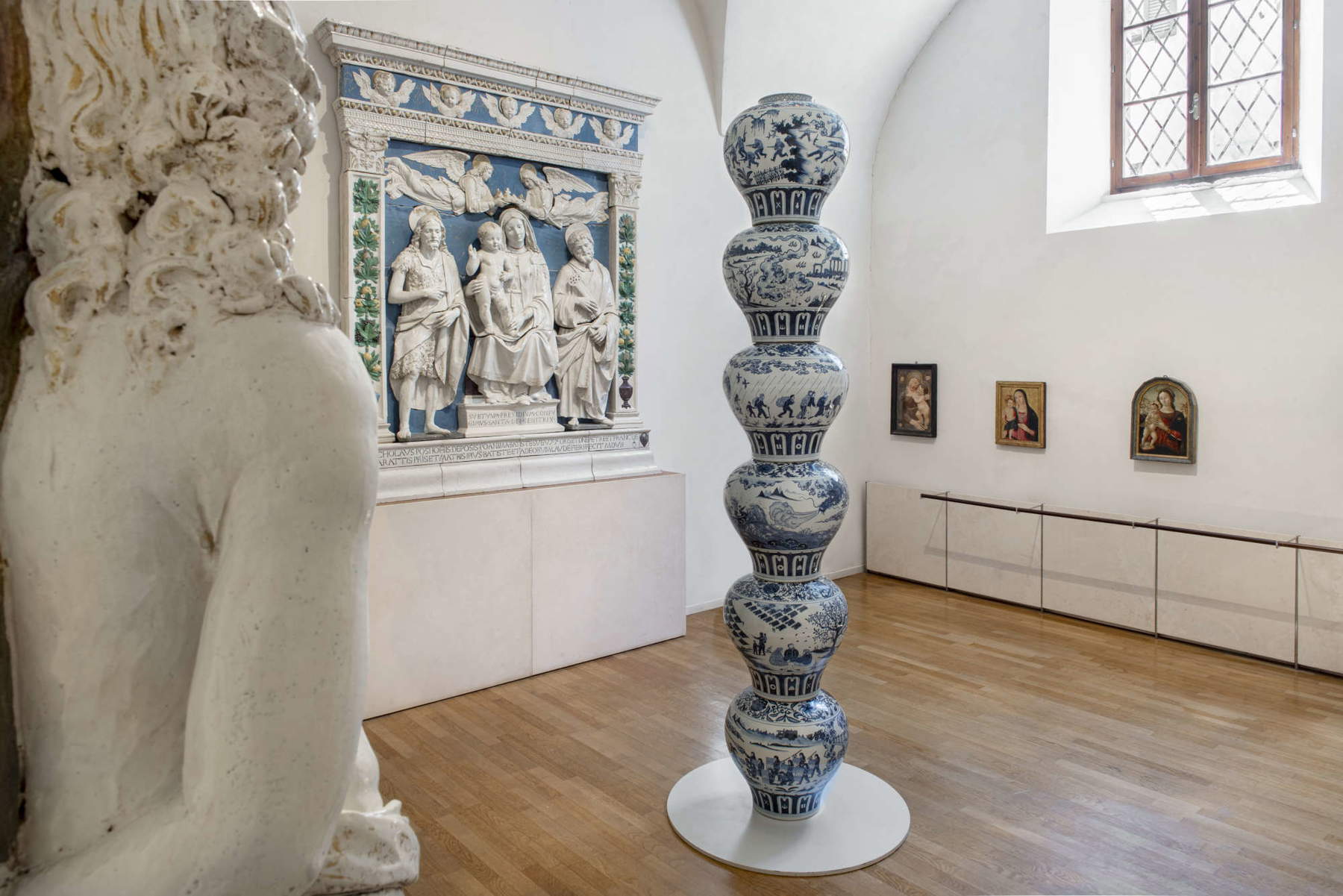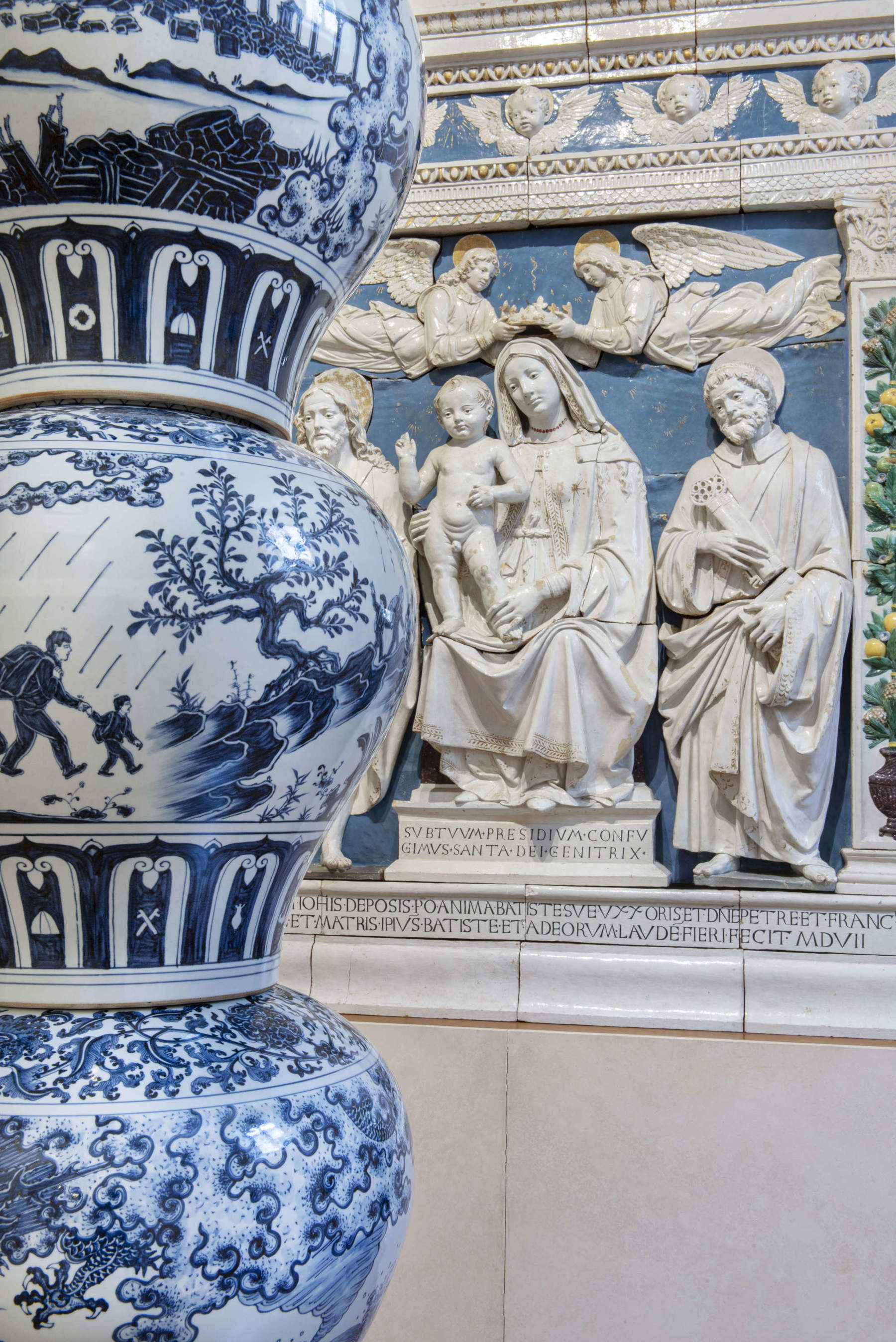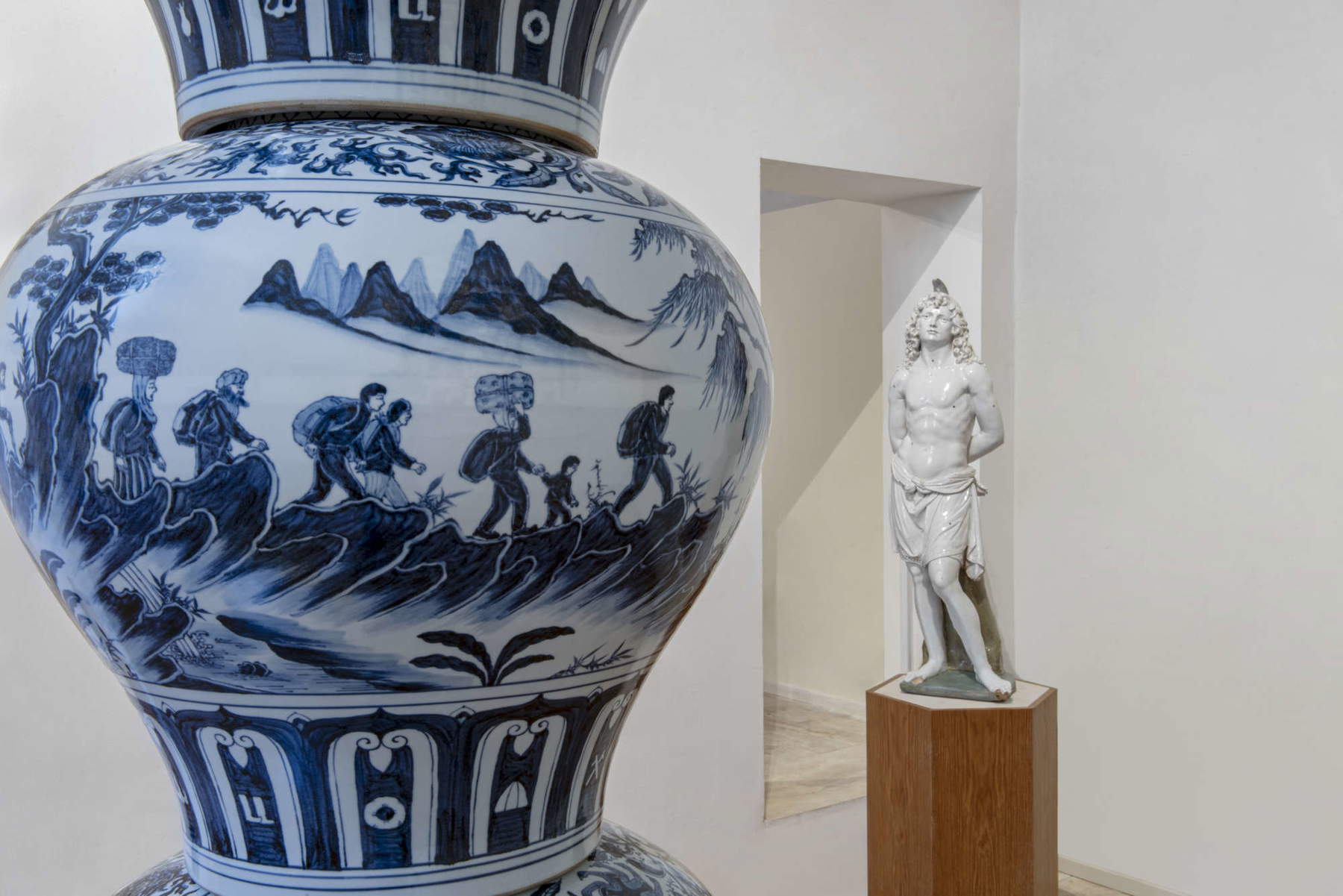A universal message of suffering and hope now runs through the halls of the Museum of Sacred Art at the Gold Complex in Montalcino. Here, in the heart of Tuscany, Porcelain Pillar with Refugee Motif (2017), one of the most emblematic works by the Chinese artist Ai Weiwei (Beijing, 1957), which for the first time enters into dialogue with the language of Catholic spirituality in a sacred art museum context, has found a home.
The initiative is part of the project Siena and the Lands of the Soul - Contemporary Destinations, promoted by theArchdiocese of Siena - Colle di Val d’Elsa - Montalcino and the Diocese of Montepulciano - Chiusi - Pienza, with the realization curated by Opera Laboratori, in preparation for the Jubilee of 2025. The Municipality of Montalcino and Galleria Continua collaborated on the event, which places the Tuscan town at the center of international artistic debate.
Composed of six porcelain vases, the work is a totemic column that rises in the exhibition space as a testimony to the human drama of migration. Each vase is decorated with scenes depicting men, women and children fleeing: bodies bent under the weight of hope, faces marked by waiting, gestures frozen in aimless movement. The images, inspired by the aesthetic language of Qinghua porcelain - a Chinese tradition thousands of years old - are rendered in blue and white, the same colors as the famous glazed terracottas by Andrea della Robbia that adorn the museum.


This use of color is intended to create a visual and symbolic bridge between Ai Weiwei’s contemporary art and the sacred classicism of Renaissance sculpture. Indeed, providing a counterpoint to the porcelain tower is the presence of the Madonna and Child crowned by two angels and Saints John the Baptist and Peter (1507), a Della Robbia work that dominates the wall behind. The blue and white of popular Tuscan devotion is thus intertwined with the blue and white of global sorrow. The comparison between the two works aims to generate iconographic and spiritual reflection: the Madonna’s protective gaze ideally rests on those lost faces painted by Ai Weiwei, creating a new narrative where religious compassion is combined with secular piety. St. Paul’s Letter to the Romans, quoted in the installation, offers the interpretive key: hope as the engine of the human journey, even in the most dramatic contexts. It is no coincidence that the “Contemporary Mete” project wants to address Jubilee pilgrims, offering them places where artistic beauty becomes the medium of a message of justice, welcome and redemption.
Ai Weiwei’s work represents a milestone in the path “Siena and the Lands of the Soul - Contemporary Mete,” created to combine the sacred artistic heritage with expressions of contemporary art. The project aims to restore centrality to the territories of the Tuscan hinterland through spiritual and artistic itineraries that are able to address the great issues of our time. In this case, the issue of migration is reread through the aesthetic and political gaze of Ai Weiwei, one of the most influential artists on the international scene.



Born in Beijing in 1957, Ai Weiwei lived in exile in the United States, then returned to China where he established himself as an artist and activist. Since 2015, when he left China to move to Europe, the theme of Mediterranean migration has become central to his artistic research. Porcelain Pillar with Refugee Motif is one of many works that address this humanitarian tragedy with a critical and poetic gaze.
“If we look at the history of immigrants,” said the artist, “people have always moved, united, chosen new destinations and mixed with different cultures. This contributes to the improvement of our literature, poetry and art.” A thought that reverses the emergent narrative and restores dignity and value to human movement, in all its forms.
Ai Weiwei’s commitment to human rights has never been limited to the visual realm. In 2017 he presented the documentary Human Flow, a visual and emotional account of migration across 23 countries, at the Venice Film Festival. The film, like his installations, is a rallying cry against global indifference and a testament to the transformative power of art. His style combines Chinese tradition and contemporary provocation, often employing symbolic materials, craft techniques and references to ancient art history. His works are installations, videos, photographs, and sculptures. Ai Weiwei is able to move between politics, activism and formal research, making himself a voice for the injustices and contradictions of the present.
 |
| Ai Weiwei in Montalcino: porcelain to tell the pain and hope of migrants |
Warning: the translation into English of the original Italian article was created using automatic tools. We undertake to review all articles, but we do not guarantee the total absence of inaccuracies in the translation due to the program. You can find the original by clicking on the ITA button. If you find any mistake,please contact us.